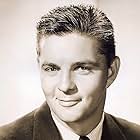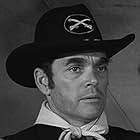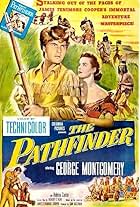Admittedly, the 60-minutes is not for all tastes, especially those expecting a conventional western. The movie is, however, an oddly atmospheric tribute to its director, Frank Wisbar, who also helmed the moodily exotic Strangler of the Swamp (1946). He was clearly an artistic moviemaker dwelling in the anonymous depths in the manner of the better-known Edgar Ulmer.
The story's about an 1803 Kentucky family traveling west in a wagon to settle in the newly acquired Louisiana Purchase. The family patriarch is something of an unyielding tyrant, escaping civilization so he can live by his own rules and laws. On the way across Indian land, they pick up a newly orphaned young woman (Aubert) who becomes an immediate attraction for the family's many young men. They also encounter a government mapmaker (Baxter), who knows the prairie ropes but also represents what Dad's wanting to escape from. Various rivalries and a mysterious murder form the movie's remainder.
But what makes the movie memorable, I think, are the visuals. Working with a shoestring budget, Wisbar has basically one flat prairie set overgrown with tall grass, along with an all- encompassing moody sky. Together, these compose a strange setting unlike anything I've seen. It's like being inside a teacup that's upside-down on a grassy table top. People and wagon move through the tall grass that somehow appears to consume them with each step. The only variations are occasional campsites, but these too, are menaced by the surrounding prairie. Wisbart has, in effect, taken a severe handicap, the single set, and turned it into an exotic world of its own. Once you've seen it, I don't think you'll forget it. Also, catch the many imaginative camera angles that lift things beyond the conventional, including the transition into the psychology of guilt that comes at the end.
All in all, I think the movie is a "find" for folks looking for obscure oddities. I'm not claiming it's a "gem" since the acting is uneven, at best, while the storyline is nothing special. It is a movie, however, whose visuals have stayed with me for 60-some years. And, to my knowledge, it's never appeared on TV during that time, which likely accounts for my being the only person so far to review it. Still, I'm really glad to be able to tout the movie's singular virtues to a hopefully wider audience. I'm just sorry director Wisbar moved back to Germany, likely discouraged by the subterranean budgets of his projects. As this film shows, he was clearly a man of unusual visual talent.
(In passing—I got my DVD from w.w.w.MoviesUnlimited.com The only venue I've seen the film available on.)















